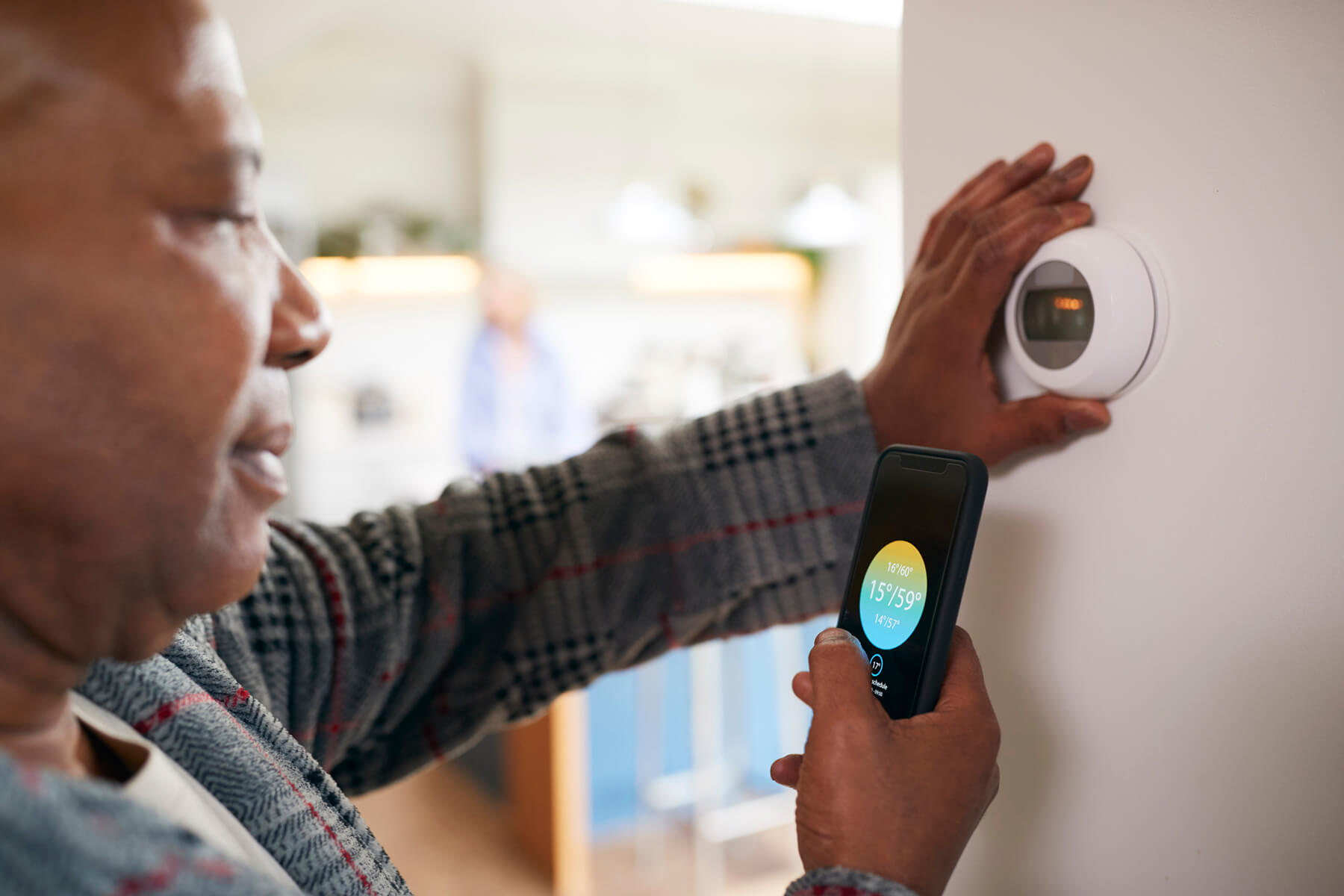8 Home Upgrades That Can Lower Your Energy Bills

Around here, winters can get cold. While it’s great to enjoy the sight of a winter wonderland (and a cup of hot cocoa) from inside a warm home, the cost of keeping your place comfortable can be significant. In the spirit of National Cut Your Energy Costs Day, which is January 10th, here are eight strategies to improve your home’s energy efficiency, lower your energy bills, and help reduce your impact on the planet.
1. Get an Energy Audit
Lowering your energy costs starts with knowing where the problems are. Many utilities offer low-cost home energy audits that can be done in person or virtually. A trained energy advisor will help you inspect your home and evaluate your home appliances to identify potential energy drains. A professional energy assessment will typically give you a detailed report of the advisor’s findings and recommendations to help you save power and money, such as by adding insulation or switching to energy-efficient lightbulbs.
2. Install a Programmable Thermostat
One of the easiest ways to lower energy costs is by installing a programmable or smart thermostat. These thermostats can regulate your home energy use by adjusting the heat – or air conditioning during warmer months – to reduce energy consumption when you’re away or asleep, while ensuring your place is a comfortable temperature when you are home during the day. Some thermostats can connect with smart home systems, allowing you to monitor and adjust the temperature remotely. See how a programmable thermostat can make a difference for homeowners’ electric bills.
Here’s another tip to help reduce your heating bills: Lay throw rugs over hard floors for an easy way to add extra insulation (particularly if the floor is above a garage or crawl space). It’s a smart way to keep rooms (and feet) warmer without making another trip to the thermostat.
3. Update Appliances
Another way to achieve home energy efficiency is to replace aging appliances. If your refrigerator, dishwasher, washer, or dryer is over 10 years old, you may benefit from replacing it with a more efficient Energy Star®-certified model. Your upgrade may even qualify for a rebate from your local utility company.
4. Insulate, Insulate, Insulate
Energy and money may be escaping from your home. If your attic or roof isn’t properly insulated or if your doors and windows are leaking air, it becomes harder for you to keep your home warm in the winter and cool in the summer. Not sure if your doors or windows are leaky? Hold the back of your hand or a lit candle in front of areas where you suspect there is a leak.
Once you find the leaks, use caulking, weatherstripping, or other low-cost solutions to seal them. For larger home improvements, consider spending extra money on high-quality energy-efficient windows and doors to reduce your energy costs over time.
5. Beware of Energy Vampires
Energy vampires are appliances that continue to draw power from electrical outlets even when turned off or idle. Whether it’s a hair dryer in the bathroom, a coffee maker in the kitchen, or the components of your home entertainment center, all kinds of unused electronics and appliances can drain power if they stay plugged in. Studies have shown that energy used by idle devices can add hundreds of dollars to your annual energy costs. To keep these energy vampires at bay, unplug appliances when they’re not in use or connect them to a power strip so you can easily turn multiple appliances off at once.
6. Cool Down Affordably
Winter isn’t the only season that can take a toll on your finances. Another drain on your home energy bill may be the cost of air conditioning over the summer. Cleaning or replacing your air conditioner filters can reduce each unit’s energy consumption by up to 15%.
Have an older central air or window unit? Consider replacing it with an Energy Star®-certified model to lower your energy costs even more.
7. Go Solar
In recent years, the cost of adding solar panels to a home has significantly decreased. By installing a solar panel system, you could potentially see thousands of dollars in savings over the life of the panels. Want to see if solar is right for your home? Google has created Project Sunroof, a free calculator that provides an estimate of how much you could save based on your home’s solar potential.
8. Talk to Us
Making energy-efficient upgrades today can lead to big savings in the future. But what’s the best way to cover the upfront costs?
Let us help. At American Heritage, our low-rate personal loans and credit cards can provide the purchasing power you need, affordably. For larger projects, we can also help you take advantage of your home’s equity to finance energy-saving improvements, such as new windows or solar panels, with a HELOC or home equity loan.

